🥇Sand Filters vs Cartridge Filters – Best Pool Filters Review
Time and again, I find hot debates on what’s the best pool filter system with regards to sand filters vs cartridge filters. There seems to be no clear winner between the two and the matter escalates further with the mention of DE filters; another popular type of pool filter.
But then, how do you know the best type of filter for your pool? What are some of the factors to consider when buying pool filters? Also, what are some of the best sand filters and cartridge filters?
All these and more are factors that you need to understand so that you make the most informed buying decision.
I have worked in the pool industry for a while and being a swimming enthusiast, I have a pool in my backyard. I have used several types of pool filters and today, here are my top picks for the best pool filters in the market.
Main Differences Between Sand and Cartridge Filters
Sand and cartridge filters have a lot of differences that ensures different characteristics of these filters:
- Both filters are installed in tanks, but a sand filter is a tank full of silica sand, and a cartridge filter consists of several polymer layers folded together and installed in the tank accordingly.
- Tank internals for sand filters are more complicated than cartridge ones; as for sand filters, backwashing cleaning procedures should be performed. This requires two ways valves in the tank.
- Sand filters can catch debris only up to 20 microns when cartridge – up to 10 microns.
- Sand filters are easier than cartridges in the installation and maintenance; also, they are simple and cheap.
- Cartridge filters are more accessible in changing procedures; additionally, they require less water for cleaning procedures.
The Best Sand Filters
I have used several models and here are my top 4 picks.
1. Hayward S210T ProSeries – Best for Medium Pools
It boasts a 21’’ tank that can handle an average of 15,000 gallons and still manage a reasonable turnover.
Regarding cleaning performance, there’s no doubt that this is a top performer, just like all the other Hayward products.
But then, compared to something like the C900 SwimClear Plus, its performance is relatively low considering this is a sand filter – filters down to 20 – 40 microns whereas the latter filters down to 10 – 15 microns. Though it may seem quite expensive, it is value for money considering there are no replacement costs – may be after 5 – 7 years when the sand has to be replaced.
But remember, while it may look cheaper to maintain this filter, it will really cost you when it comes to backwashing; you need to refill the pool and add chemicals again. Another thing, it may not be able to filter those fine particles so achieving 100% clean water is not possible.
2. Hayward S244T ProSeries – Best for Large Pools
The S244T ProSeries is quite similar to the S210T ProSeries, except for the fact that the former has been designed for much larger pools. That’s evident from the larger 24’’ tank.
Though it is more expensive than the S210T ProSeries, I would advise you to buy this filter instead of the smaller one as a bigger sand filter is always better, unlike with pool pumps.
It will also filter down to 20 -40 microns and has a better turnover now that the filtration area is larger. This means it has been built for large pools and even though the tank size recommends 20,000 – 30,000 gallons, we tested it with 33,000 gallons in-ground pool and it didn’t disappoint. But then, we don’t recommend using it on such a large pool as the turnover will be less than two cycles a day.
If you have over 30,000 gallons, I would recommend the same model but with a larger tank; maybe the Hayward S270T ProSeries with a 27” tank would work.
But on the downside, you will still have to deal with the cons of sand filters; i.e backwashing and lesser filtration efficiency compared to cartridge filters. On top of that, the water is not evenly distributed on the sand. Many are times I have found dirt settled in some areas. Ordinarily, you expect the dirt to be evenly distributed on the sand bed.
3. Intex Krystal Clear 12-inch Sand Filter Pump – Best Value for Money
When you buy this pool filter, you don’t have to buy a pump again. The Krystal Clear boasts a steady 2,100 GPH flow rate making it suitable for above ground pools from 2,800 to 12,800 gallons. I’ve used this with several pools, including Intex Ultra Frame and Coleman Power Steel, and the result was clean, crystal clear water.
One thing I like about it is convenience. First, it allows pool owners to do more; the 6-function valve allows filtering, backwashing, rinsing, recirculation, draining, and closing the system. And «12» in the name stands for the tank size.
Remember to check the local regulations on filter backwashing, and this one needs frequent backwashing.
In addition to this, Intex built this filter pump with a 24-hour timer to allow you to concentrate on other stuff.
Finally, we notice Hydro aeration technology for improved water clarity due to better circulation, filtration, and increased negative ions at the water surface. This function allows you to use the pump in bigger pools compared to the same pumps without aeration.
But then, the GPH is very low, and this is not the best with sand filters, so, at times, it will be ineffective, especially with very small particles, 20 microns and less.
If you are an above ground pool owner who looks for quality and performance, this is a great deal. The Intex 12-inch Krystal Clear will pump water and still filter it to keep your pool water fresh and clean always.
4. Intex Krystal Clear 14-inch Sand Filter Pump – Best Improved Performance
In a word, this model is a twin of the previous Intex Krystal but designed for larger swimming reservoirs. Its main distinguishing features include a larger 14-inch tank and higher sand capacity. These inevitably lead to greater performance.
The pump boasts a 2,800 GPH flow rate, which means experts recommend it for 5,500-17,200 gal. above ground pools. Once again, you can try it for even bigger constructions thanks to improved Hydro aeration circulation and twice more powerful motor compared to the Intex 12-inch.
The model kept all the pros I loved in the previous pump, including a 24-hour timer, easy and multifunctional application with 6 functions, and a convenient pressure gauge.
However, please mind the drawbacks are also the same. Besides, Intex Krystal Clear 14-inch will cost you more. But I believe the improved performance is worth this money, especially minding that you get a whole pool system with pump integrated.
The Best Cartridge Filters
The following are my top 4 picks for the best cartridge filters.
1. Intex 28633EG Krystal Clear – Best Above Ground Cartridge Filter
This is because of one reason; sand filters need high-pressure pumps and the 28645EG. But this is not to mean that this filter pump has high pressure, the thing is that cartridge filters work efficiently even with low pressure.
But the best thing about this filter is the efficiency. Cartridge filters will capture particles as small as 10 microns so if you are wary of Recreational Water Illnesses, this will be a better purchase.
But on the downside, this pool filter requires frequent maintenance. Typically, filter replacement is needed every season. While it may be easier to replace the filter, it is quite costly.
That said, you’d want to think twice if you are attracted to this filter because it costs low, but maintenance is high. But then, it’s not such a bother considering a sand filter will also increase your water bills.
2. Hayward C900 SwimClear Plus – Best for Medium Sized Pools
I like its performance; it’s much better than what its sand competitor, the Hayward S210T ProSeries, does.
You also don’t have to worry about the local regulations and the impact of backwashing as you are only required to change the filter.
Though many find the maintenance of this filter very expensive, it is not as expensive as said. Sit down and do the math of refilling the pool and adding chemicals after backwashing. You will realize that it’s, in fact, cheaper and offers more value for money because it filters down to 10 – 15 microns while ProSeries will filter 20 – 40 microns.
One unique thing I like about this filter is the design; it stands quite high so you don’t have to bend and also, the pressure gauge and air relief are conveniently positioned at the top for easy accessibility.
But on the downside, you will need a much more powerful pump for it to work efficiently. I know many of the pool owners who buy this filter have medium sized pools and light duty pumps. The inefficiency lowers GPH which in turn slows the turnover.
3. Hayward W3C4030 SwimClear – Best for Large Pools
The W3C4030 is built for large in-ground pools, and most commercial pools have it. It boasts a large 425 ft2 filtration area and would turn over a 20,000 gallons pool in no time. It processes 150 gallons in a minute.
The model offers extra-long filter cycles for more thorough filtration. But on the other hand, you may have to wait longer for the end. Nothing sucks like the sun going down when you are waiting for the filter to finish the cycle.
With a high-performance pump, you are guaranteed the best filtration with all the debris, large and small, filtered out. I like the head design. The SwimClear comes with quick access to internal components, which is very easy to open when cleaning or changing the cartridge.
The material quality is also awesome and will withstand the scorching sun all year round. But if you can design a makeshift shade for it, or rather a cover, it would be best.
But on the downside, be ready for a high price.
I also wish the integral drain was much bigger, at least 2 inches. The 1.5- inch may be okay for a medium-size filter like the C900’s, but for a heavy-duty filter like this one, a 2-inch would make it faster. Otherwise, everything else is excellent.
4. Intex 28635EG Krystal Clear – Best 2-In-1 Cartridge Filter
Let me close the review with one more Intex Krystal Clear filter. We’ve already discussed two such models in the sand filters part, but here is an absolute analog based on cartridge water processing.
The unit is made for small and medium above ground pools like 12’, 16’, and 18’ frame models. In fact, you purchase two products in one body as it features a built-in pump.
Filter processes 1,500 GPH, has an auto timer with preset 2 to 12-hour cycles, and familiar Hydro aeration technology.
The only annoying moments are possible leaks and that you’ll have to purchase hose adapters separately.
Pool Filters Buying Guide
In this section, we will now talk at length about important aspects that should be on your mind when buying pool filters. Remember, just like when buying the pool itself as well as the pump, there are those major considerations that made you decide on the pool you have or the pump you have installed.
To start off, let’s first look at the types of pool filters available and the features they offer.
Types of pool filters
If you did your homework, you understand that there are three types of pool filters. They are classified solely based on the type of media used. For starters, the media is what filters out the dirt from your pool water.
So, without wasting much time, let’s get down to business.
Sand Filters
A sand filter has a tank that is filled with special grade sand to filter dirt and debris. In this filter system, dirty pool water is passed through #20 US grade silica sand and as it flows through, dirt and debris are trapped inside leaving you with clean water at the bottom.
Sand filtration is the oldest filtration method and even though we have other pool filtration solutions, it is still a favorite. It filters down to 20 – 40 microns and the performance improves as it continues to trap more dirt.
The good thing about sand filters is that they are cheap and have a longer lifespan. A 50 lbs. bag of sand media will cost you $20 – $30 while a single cartridge filter will cost you an average of $50. By the time you will be required to change the sand filter media, let’s say 5 years, you will have bought around five cartridge replacements.
But on the downside, sand filters have two disadvantages. First, if your pump pressure is low, it becomes inefficient and the turnover is often longer. Another thing, backwashing may have restrictions and also, it wastes a lot of water. Actually, backwashing is a hot topic especially with the effect of Chlorine and DE in the expelled pool water.
Cartridge Filters
In this type of filter, the sand media is replaced by a filter cartridge; made from pleated polyester, the same one that your vehicle air cleaner uses.
Cartridge filters are better in efficiency compared to sand because they filter down to 10 – 15 microns. This will capture a lot of small; particles that a sand filter wouldn’t. For amateurs, cartridge filters are also the best because they are easier to install.
Unlike sand and DE filters, they have no multiport valves that means the plumbing system is straightforward. That also means a cartridge filter doesn’t have backwashing so, you won’t have to worry about local regulations or water wastage.
So, what’s done instead?
Cartridge filters require frequent cleaning and replacement. If you live in areas with lots of foliage, maintaining a cartridge filter will be quite a hassle. You are required to remove the filter and clean the large debris. If you have a busy schedule, finding time to do all these may be hard so a sand filter sounds a better option now that backwashing is just easy.
Another thing, the lifespan of a cartridge filter is very short and to make matters worse, they are expensive.
DE Filters
Diatomaceous Earth filters are very similar to sand filters only that the media used here is DE. There are two types of DE filters; vertical grid filters and regenerative filters. Regardless of the structural difference of regenerative vs grid filters, the most important aspect of our discussion today is that they are both filled with DE as the filter media.
DE filters are the best when it comes to the efficiency of filtration. Unlike sand and cartridge filters, DE filters will filter down to 2 – 3 microns. This guarantees you that all the dirt and debris will be filtered out. If there are many cases of RWI, and you want to fully protect your family from exposure to pool dirt that carries these RWIs, it’s best to use a DE filter.
But then, why are DE filters not as popular as sand filters and cartridge filters?
First, they are very expensive compared to cartridge and sand. This is both in terms of initial cost and maintenance. But the worst bit is in maintenance as it requires backwashing just like sand and to add salt to the injury, it flushes out the DE so you have to replace DE after every filter backwash. Also, in some states, it is illegal to run a DE pool filter if you don’t have a separator tank to remove DE from the water you are allowing into the drain.
So, who and when should use each of these filter types?
When considering Sand Filters vs Cartridge Filters, sand models are the best for small and medium-sized pool owners on a budget. They are the cheapest, most durable, and require a minimum of maintenance. But please mind high water bills.
Cartridge filters are the golden mean for me. Here, you get much better filtration and performance suitable even for large pools. And though maintenance will take time, it’s not that tedious and expensive as we all think. Choose cartridges if you own a big pool and like thorough filtration.
DE filters are the best as they combine the pros of the previous two types. I’d recommend these filters for those who have no limits in budget and need the ultimate performance.
Is a Pool Filter Really Important?
All the hassles of maintaining your pool may be overwhelming and at some point, you may ask yourself, is a pool filter really important? What would happen if you don’t clean or replace your filter?
Besides filtering out harmful dirt and debris, a filter will help keep water moving. This will prevent any possibility of insects breeding in your water. On top of that, it helps prolong the life of your pool. Lastly, pool filters, in some areas, are a requirement by law so you need to have one or else risk prosecution.
Actually, if you want to extend the life of your pool, you should take great care of your filter. Personally, I have ever ignored replacing my filter cartridge and it wasn’t long before my pump started developing problems. It is just like your body when you don’t take care of your kidneys, your body will start getting poisoned slowly.
Selecting the Right Sand Pool Filter Replacement
To get the best sparkling pool water, there is a threshold that needs to be met; filtration, sanitation, and filtration. A lot of problems with the filtration system attributes to most of the water problems I have experienced.
In my years of experience is pool servicing and maintenance, the first suspect once we diagnosed the filter to be the problem is ascertaining the size. Many pool owners buy the wrong sand pool filter size and this leads to some imbalance and thus the threshold is not met.
To help you shop the right sand filter size, here is a guidelines chart.
Tank size | Pool capacity |
|---|---|
12’’ – 16’’ tank | 3,000 – 8,000 gallons |
16’’ – 20’’ tank | 12,000 – 18,000 gallons |
21”- 24” tank | 18, 000 – 24000 gallons |
24”- 30” tank | 24,000 - 30,000 gallons |
30”- 36” tank | 30,000 - 50,000 gallons |
Selecting the Right Cartridge Pool Filter Replacement
Just like in sand filters, pool owners also ignore the sizing of the filter.
While sand filters are calibrated depending on the size, cartridge filters are categorized based on the effective filtration area size.
Different pool filters have cartridges with varying sizes. What must be on your mind here is that the size of the filter should be proportionate to the size of the pool. This means, the larger the pool, the larger the filter is required to average the normal 8 – 10 hours turnover. If you find that your turnover is longer than expected, make sure you are using the right filter.
Here is a cartridge filter size guide. Please note, we have ranked some of the popular sizes and the number of gallons they can turn over in 8 and 10 hours.
Effective filtration area | Flow rate | 8 hours | 10 hours |
|---|---|---|---|
25 ft2 | 25 GPM | 12,000 gallons | 15,000 gallons |
50 ft2 | 50 GPM | 24,000 gallons | 30,000 gallons |
75 ft2 | 75 GPM | 36,000 gallons | 45,000 gallons |
90 ft2 | 90 GPM | 44,000 gallons | 54,000 gallons |
120 ft2 | 120 GPM | 58, 000 gallons | 72,000 gallons |
175 ft2 | 120 GPM | 62,000 gallons | 78,000 gallons |
225 ft2 | 150 GPM | 70,000 gallons | 88,000 gallons |
I know this might not give you the exact filter size you want but then, to have a rough idea of what filter size you require, there is a little arithmetic you need to work out.
Divide the turnover in gallons by the number of hours.
Example; 12,000 gallons ÷ 8 hours = 1500 gallons
This is the approximate size of the pool that should work with a 25 ft2 but then, it’s always a clever idea to oversize your pool cartridge filter. This will boost the turnover and shorten the running time of your pump thus saving energy.
Changing from Sand Filter to Cartridge Filter
Time and again, I stumble upon this question and in most cases, it goes unanswered or it is answered unsatisfactorily. For some reason, you may want to change from a sand filter to cartridge or vice versa.
Maybe you find it hard to replace your cartridge system or in an opposite case, you may want a better and more detailed filter system that can filter particles less than 20 microns, that is a cartridge filter.
From experience, I will tell you that it is very possible and in fact, you can do it yourself if you have basic plumbing skills. But for amateurs, it’s better if you call in professional service.
Filter backwashing
Since I joined the pool industry, there has been a lot of debate around filter backwashing and today, there are states that have strict backwashing rules.
So, what exactly is filter backwashing and are there any risks as stipulated by environmental bodies and advocates?
But the worst thing about filter backwashing is the impact of the procedure on the environment. The chemicals used to treat pool water, or any other dirt that may have accumulated will get into the drain and end up being deposited elsewhere where it could risk marine life. It has been documented that high chlorine levels above 5.0 ppm can kill freshwater fish while DE can choke the oxygen in the water of a small stream.
To curb the impact of backwashing, local authorities and environmentalists have come up with laws and regulations regarding backwashing. There are some that are fronted by water conservationists as backwashing wastes a lot of water while the majority of the work is done by environmentalist. There are places where backwashing is prohibited while in other areas, it is controlled.
From experience, I will tell you that there are dozens of swimming pool laws and regulations that are flouted unknowingly. The 1989 Prevention of Pollution Act states that “No person shall cause or permit the occurrence of pollution, or cause or permit a risk of pollution to arise.” While you may think of acts like oil spillage and other gross examples of pollution, just backwashing a salt water system amounts to pollution; whether a residential pool or commercial.
How to Clean a Sand Filter (Filter Backwashing)
There are two types of sand filters classified depending on the type of valve. We have multiport valves and slide valves and each has a different backwashing procedure.
To backwash, a sand filter with a multiport valve, shut off the pump and press down on the valve handle rotating it from FILTER to BACKWASH. Then, open the air bleeder assembly that’s located on top of the filter. Make sure the backwash hose is rolled out and any waste line valves opened. Now, turn the pump on and monitor backwash pressure spikes and also watch out for any hose kinking. Always be ready to shut off the pump in case you observe any of the two manifestations. Leave the pump running for a few minutes, maybe two or three depending on the pump pressure until the water is emptied. Then, switch off the pump and turn the multiport valve to RINSE and once again, put the pump on and run it for an average of 15 – 30 seconds to settle the sand bed. Once you are done, shut off the pump, move the adjustment to FILTER and note down the pressure.
When it comes to sliding valves, also known as push-pull valves, the procedure is quite different. But first, you will have to put off the pump before rolling out your backwash hose to where you are draining. Then, twist the plunger T-handle upward, two to three inches and open the bleeder assembly filter. After this, put the pump on and monitor the backpressure gauge and watch out for hose kinks. Always be ready to shut off the pump in case backpressure exceeds 30 PSI or when you see kinks on the hose. You will then backwash the sand filter for 2 – 3 minutes for the sand bed to settle and then, put the pump back on and remember to mark the pressure also.
How to Clean a Cartridge Filter
But how do you know that your cartridge is dirty or a replacement is required?
The first suspect will be a surge in pressure. Always monitor your gauges and check out for spikes which are often indicators of dirty cartridges. Remove the cartridge, and clean it. If the cartridge was dirty, the problem of spiking pressure shouldn’t occur, at least in a while. But when it occurs again, maybe it’s time to replace your cartridge. But just before that, you’d want to try a deeper cleaning by soaking the filter in a cleaning agent like Leisure Time O Filter Clean Cartridge Cleaner. If that fails then you have a go ahead of buying a new cartridge.
Apart from pressure, you can also choose to manually inspect the cartridge. There are a few indicators that will tell you it is time to change your filter. The first thing will be the end caps. With your bare eyes, you may decide whether you need to replace it or not. Look for cracks and any signs of brittleness and if you are not sure whether it’s worn out or not, move to the inner parts, actually, the cartridge itself. Check the condition of the pleats; the Remar material should be firm and every piece intact. Any tatters, frays, and rips is a clear indication that you need to get a new cartridge.
It is always important to check the condition of the cartridge not only in light of the filtration efficiency but also to keep your pool safe. The cartridge may become brittles and the cracked end parts may be pumped to the system and damage other installations.
Sand vs Cartridge Filters Comparison
Now, it’s time we put the two filter options head-on to see how they square out. We will be discussing them with regards to the important aspects you need to consider when buying filters, i.e media, efficiency, and maintenance.
Media
When it comes to pool filtration, the media refers to the content of the filter; in other words, what filters the dirt. We won’t dwell here so much because this is straightforward. A sand filter has sand as the media while cartridge filters use a cartridge to filter the dirt and so is the case with DE.
But just to note, DE is the best as it filters down to 2 – 3 microns while cartridge and sand filters come second and last filtering down to 10 – 15 microns and 20 – 40 microns respectively.
I won’t say yet what the best media is because there are a lot of other factors that should inform your decision.
Efficiency
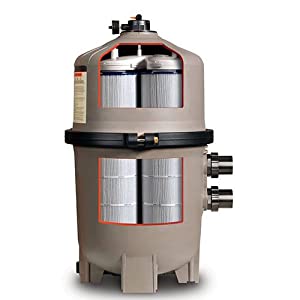
Sand filters are not the best when it comes to efficiency but then, they are still relevant to large pool owners.
It is well understood that sand filters particles from 20 – 40 microns; so what’s the cause of the variation? Normally, when the sand filter is new, it will filter down to 40 microns but as more debris gets trapped in the sand bed, it improves efficiency and filters down to 20 microns. Unfortunately, at this stage, it becomes inefficient and will require backwashing or replacement.
On the other hand, cartridge filters are much better and are best if you want the best filtration.
It can filter down to 10 microns when at optimal performance. They also have a larger filtration area that makes it more efficient than sand filters. But then, it is important to note that there are different cartridge sizes; ranging from small to large. The most important thing here is to know that the larger the filtration area, the better the performance. That’s why the 225 sq. ft. Hayward C2030 SwimClear is a better option for large pools compared to the lesser 90 sq. ft. Hayward C900 SwimClear.
Tip: A slightly dirty cartridge works best than a clean cartridge because the dirt helps to trap more dirt. So, cleaning your filter more frequently doesn’t boost efficiency!
Cartridge filters are the best as far as efficiency goes. They can filter much smaller particles that sand filters would miss out. They will also work even with low-pressure pumps.
Maintenance
You will agree with me that hiring a pool maintenance company is quite expensive. That said, you want a pool filter with minimal maintenance requirements. A lot of reviews I see emphasize that sand filters are easy to maintain meaning cartridge filters require maintenance.
Today, I will tell you something different; both sand and cartridge filters require intensive maintenance. The idea is to choose one that will be easier for you and convenient.
When it comes to cartridge filters, a lot of people will hate on the basis of the frequency of cartridge cleaning and the expensive cost of replacement. It is true that your cartridge needs to be replaced more often, and at a cost too. If not, you need to at least clean it manually. This may be quite cumbersome and overwhelming if you have a busy schedule.
On the other hand, sand filters are hyped as maintenance free but from today, forget that myth, here are the facts.
When it comes to media replacement, I agree that sand filters are the best; replacement is after 5 – 10 years. This is where the conversation ends and thus the misconception that sand filters are maintenance free. From time to time, depending on the usage, sand filters require cleaning and unlike cartridge filters that are removed and cleaned manually, you will only need to backwash sand filters. While it may be very easy to backwash the filter, the impact is gross. You will need to top up the water (the capacity of your pool, 2000 gallons, 5000 gallons, e.t.c.) that’s a higher water bill and again, chemicals need to be added in the new water. For cartridge filters, you only need around 20 gallons and your garden hose.
Frequently Asked Questions
1. What is the difference between sand filters and cartridge filters?
2. What is the best cartridge pool filter?
3. Can I use Hayward C900 SwimClear Plus pool filter in an above ground pool?
4. How long should I backwash a sand filter?
5. Do you use chlorine with a sand and a cartridge filter?
Our Verdict: Sand Filter vs Cartridge Filter
So, what’s the best filter system for you?
To be honest, this is a matter of preference and in some cases, you don’t even have a choice because of local laws and regulations. Your pump could also determine the type of filter you have; say you buy the Krystal Clear that combines.
But a few things to note; if you have a low-pressure pump, avoid sand filters as they become inefficient when a little dirt builds up. For the best and most efficient filtration, DE is the best media but due to its unpopularity, cartridge filters fill in the gap and are much cheaper.
Enough said it’s my time to check out. I wish you the best as you continue shopping for a pool filter so until next time, have a wonderful swimming season.


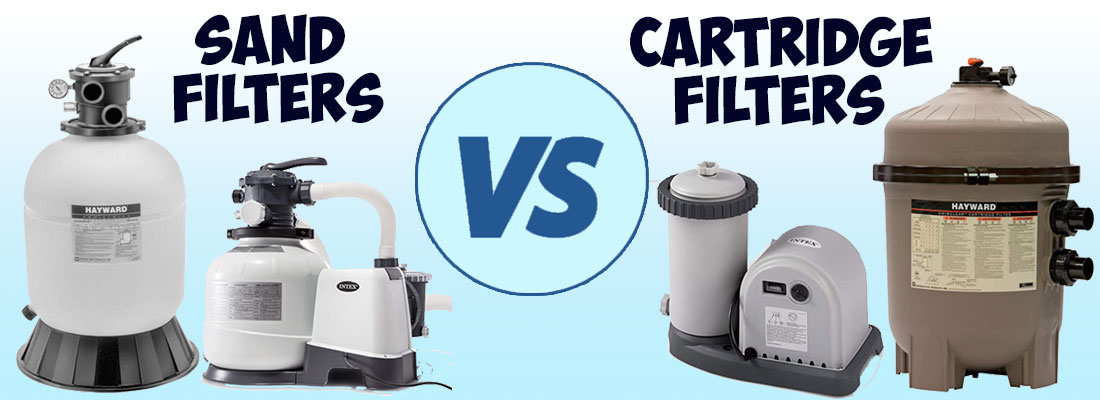




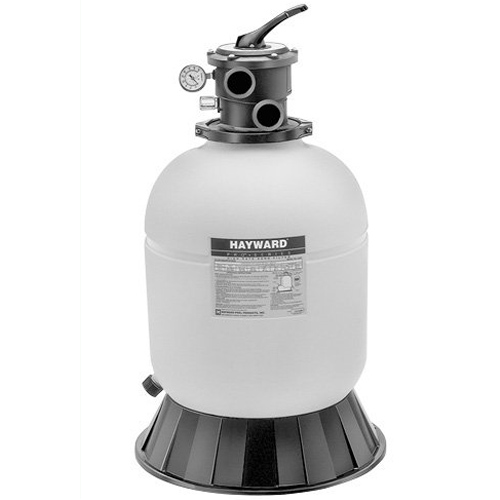
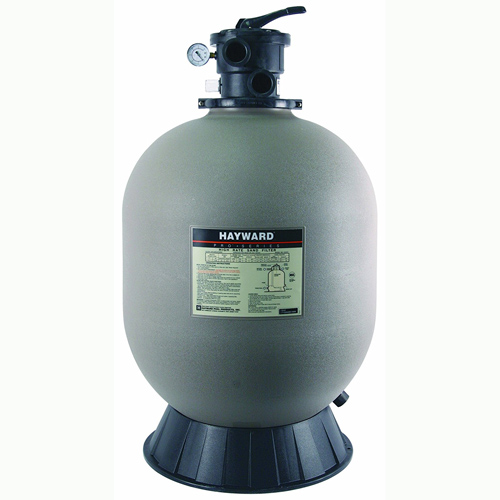
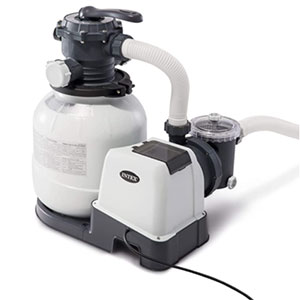
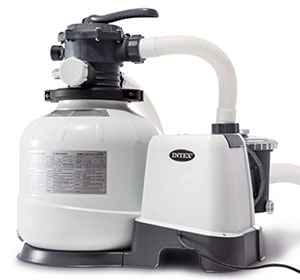




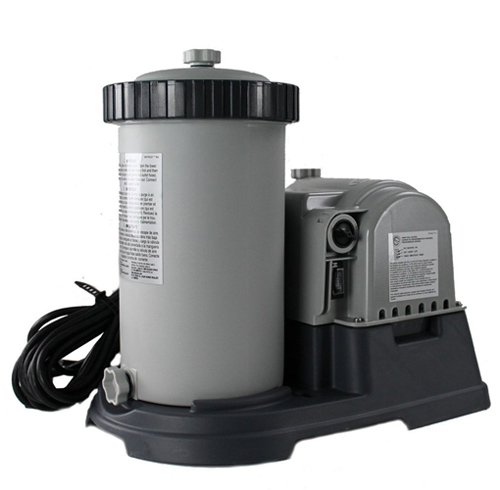
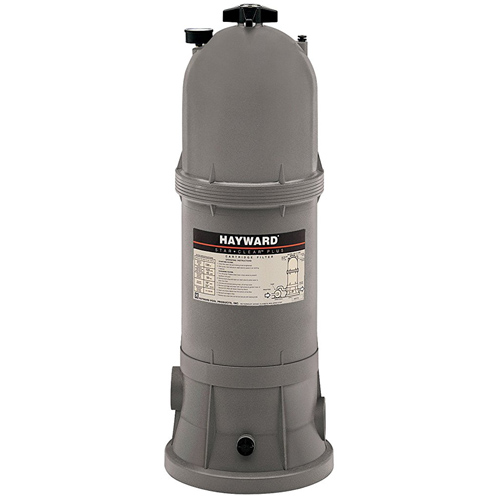
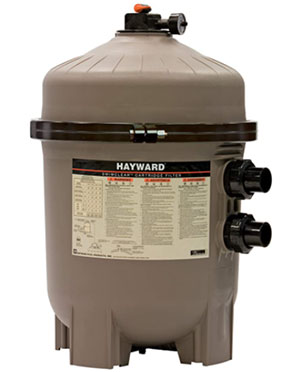
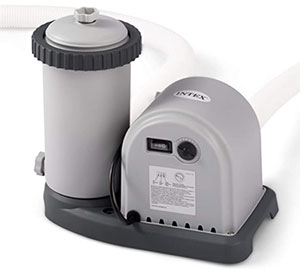
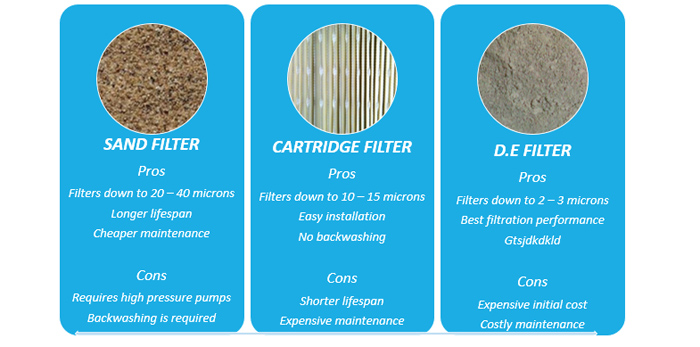

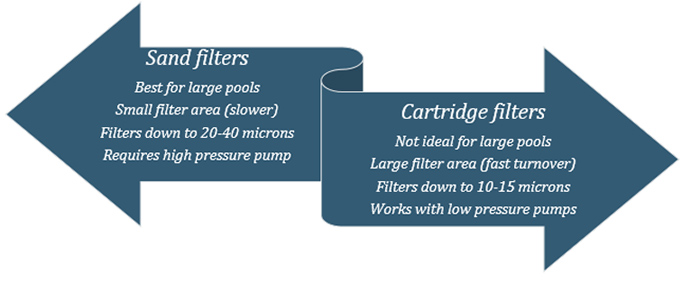



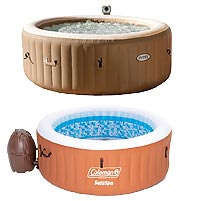
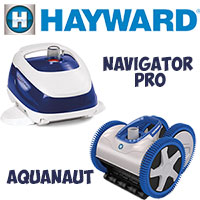
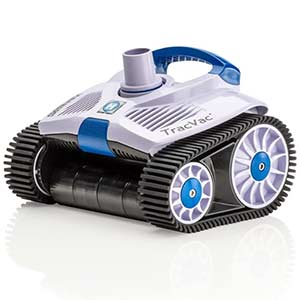
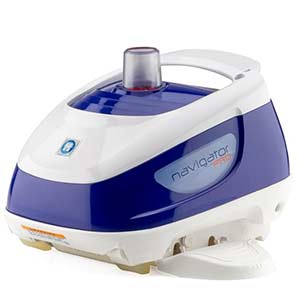
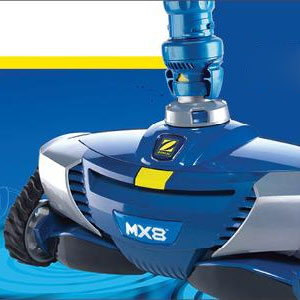
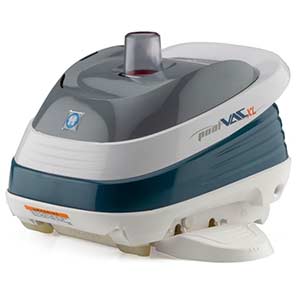
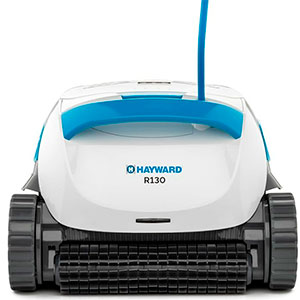
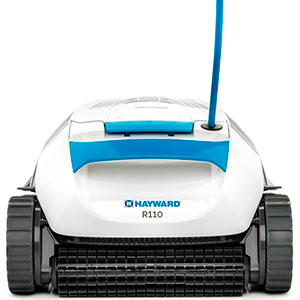
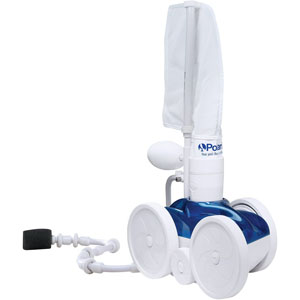
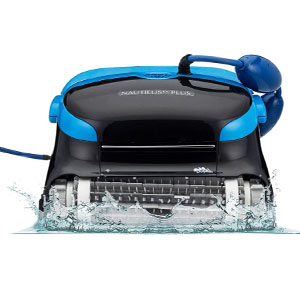
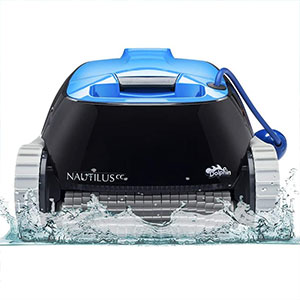
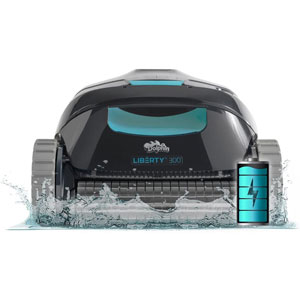
Henry Bean
Hi! Thank you for the article, now the difference is quite clear for me. You said sand filters need regular backwashing. How often should I do it and for how long?
Markus Robertson
Hello, Henry! Thank you for your high appreciation! The frequency of filter backwashing depends on how often you run your filter. If you’re an active swimmer and clean water daily, backwash the sand filter once per week. If you filter water less often, do it at least once per 2-3 weeks. Backwash the sand filter until you see that water runs clear from it.
Tom
Hello! How much is an average cartridge filter? And how much will it cost me monthly? Thanks!
Marcus Robertson
Hello, Tom! Thank you for your question! On average, a cartridge filter costs about $10. Prices start from $7 and reach $30 if you purchase a pack. Manufacturers recommend changing a cartridge filter in your pump every 2 weeks. So, the maintenance will cost you about $20 per month.
Amanda Allen
Hi! I want to get Intex Krystal Clear 14-inch pump to run it with a saltwater system. Will they fit each other? If don’t, what filter pump should I choose instead? Thanks.
Marcus Robertson
Hello, Amanda! Thank you very much for your question! Indeed, Intex Krystal Clear series filter pumps are perfectly compatible with saltwater systems, especially those by the Intex brand. The best-selling models include Krystal Clear 12-inch, 14-inch, and 16-inch. You may learn everything about them in our Best Intex Pool Pumps for Above-Ground Pools review. The 14-inch model is a golden mean in terms of performance and price, which will suit your needs.
Rachel
Will Zodiac MX cleaners work with Intex 26645EG Intex-2100 gph sand filter pump? Thanks
Marcus Robertson
Hello, Rachel! Zodiac MX series cleaners are compatible with various pool filter pumps. However, please mind that some models (like the MX6) require no pumps at all.
Melanie
Please recommend a sand filter for a 33ft inground pool! Thank you!
Marcus Robertson
Hello, Melanie! Thank you very much for your question! In our opinion, Intex Krystal Clear series would be an optimal option for a pool of your configuration and size. The 12-inch Sand Filter Pump will offer the best performance (not too great for the 33ft pool) for an affordable price.
Peter L
Hello, Marcus) Thank you for this comparison. In fact prices for DE filters flew into space((( I use a sand filter and it does its job impeccably for almost twice less money I think.
Marcus Robertson
Hi, Peter! Thank you very much for your kind words and comment. Unfortunately, you’re right about the prices. The market is changing. So, if you’d like to stay within strict budget, sand filters are the best, “golden” option that balances between price and perfect performance. However, DE models still offer ultimate filtration quality. That’s why owners of super large pools, people with allergies and those not limited in budget will not feel sorry for this purchase.
Azat
You mentioned microns in filter descriptions. Can you please explain how is it important? Which micron numbers to choose?
Marcus Robertson
Hi, Azat! Thank you very much for your question! A micron is a unit of size/length equal to one millionth of a meter or 10-6 m. One micron is 1/26,000 of a inch. Micron measure unit is often used in filter descriptions to indicate the size of particles they can trap. Thus, the models of our comparison can filter particles as small as 20-40 microns.
Olga
Which filter type is preferable to families with children? I’m looking for a safe model.
Marcus Robertson
Hi, Olga! Thank you very much for your question! Sand filters ensure better water filtration which is a key moment for parents, lasts longer and are more affordable in service.